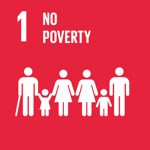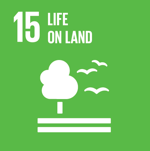Biofortified Maize and Beans with Micronutrient
 Colombia
Colombia
 Bolivia
Bolivia
 Venezuela
Venezuela
Executive Summary
Más de 3.000 millones de personas no cubren sus necesidades básicas de alimentos y están en riesgo de enfermedades y baja calidad de vida debido a deficiencias de micronutrientes. Entre las posibles soluciones se encuentra el mejoramiento genético de cultivos, la cual puede ser una opción a largo plazo y de menor costo que el de suministrar suplementos vitamínicos y minerales o el de fortificar los alimentos mediante procedimientos industriales en posproducción.
Este proyecto propuso, a partir de la agrobiodiversidad local, evaluar y producir nuevos materiales de maíz y fríjol de alto contenido de minerales y proteínas por mejoramiento genético como alternativa para comunidades pobres urbanas y rurales de Bolivia, Colombia y Venezuela. En su ejecución se contó con un equipo multidisciplinario de médicos, nutricionistas, trabajadores sociales, mejoradores y agrónomos de seis instituciones especializados en el tema de la nutrición y mejoramiento genético. Las actividades se centraron en los departamentos de Cauca y Nariño en Colombia; en Cochabamba y Santa Cruz en Bolivia y en el estado de Lara en Venezuela. Los objetivos específicos principales fueron:
- Caracterización de la diversidad de frijol y maíz para calidad nutricional
- Obtención de nuevas variedades de frijol de alto contenido de minerales
- Desarrollar protocolos para dietas de niños usando frijol biofortificado y maíz QPM
- Capacitar e informar a la opinión pública y empresas de estas nuevas oportunidades
The technological solution
The technological solution of the Project was based on the genetic improvement of two key species for feeding the population of Latin America, corn and beans. The low quality of traditional corn protein (lysine and tryptophan content) and micronutrient deficiencies (zinc and iron) in poor populations, motivated researchers to explore the genetic diversity of both species to remedy these deficiencies. In the case of corn, the solution was to identify and improve the materials known as QPM that show better quality proteins, and in the case of beans, to identify and evaluate lines of this species with higher zinc and iron contents. Although the studies carried out do not lead to immediate solutions, they do provide an important base of knowledge and experience for other initiatives of this nature.
Results
A total of 248 bean accessions in Bolivia, 98 in Colombia and 63 in Venezuela were analyzed for iron and zinc content by the atomic absorption methodology. The range of iron fluctuated between 40 and 100 ppm and in zinc from 20 to 51 ppm. Lines NUA45 and NUA35 were found to have a high content of both elements.
In the case of QPM corn, the best hybrid in eleven locations was (CML264Q / CML273Q) CML491 with a yield of 5.28 t / ha. Hybrid seeds and varieties were multiplied to make their benefits known to farmers, technicians and NGOs.
The differential in iron concentration in genetic resources evaluated was between 15 and 20 ppm. Protocols for bean / maize diets and nutrition studies with 300 children in nurseries were designed. 20% of children with anemia were found at the beginning, although hemoglobin levels increased at the end, indicating that biofortification can contribute to populations with deficiencies.
In anthropometric and biochemical tests, no significant differences were found between the biofortified group and other groups, possibly because the population had good nutritional status and differences in soil and climate affect iron and zinc concentrations.
Beneficiaries
The potential beneficiaries are consumers in rural and urban areas, especially women and children who normally show nutritional deficiencies. The information obtained is relevant for researchers and planners of agri-food policies in participating countries.
A case of interest directly related to the projet´s results was documented in Bolivia. The Pairumani Seed Center in 2007 sold 45,000 kg of improved opaque 2 maize seed (QPM), standing out the Aychasara 101 variety. If we consider that small farmers buy an average of 15Kg per family, the benefits were extended to about 3,000 families!
Sustainable Development Goals




Participating Organizations
Executor
- International Center for Tropical Agriculture (CIAT) - Colombia
Co-executor
- CIFP - Bolivia
- FIDAR - Colombia
- Instituto Nacional de Investigaciones Agrícolas (INIA) - Venezuela
- UAGRM - Bolivia
- Univalle - Colombia




